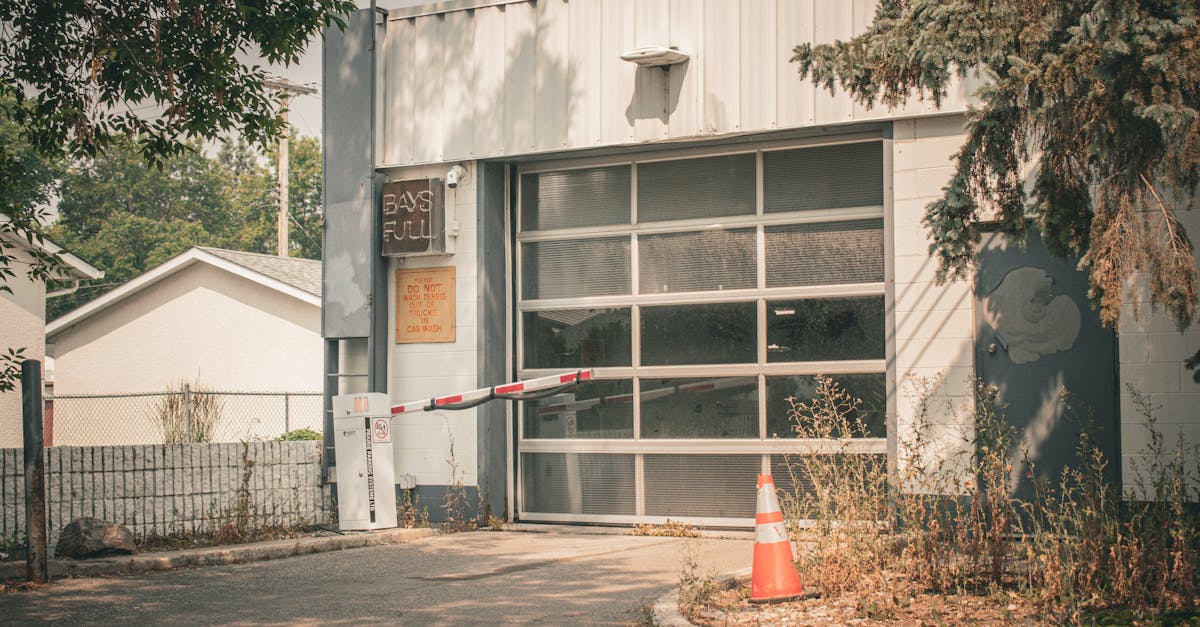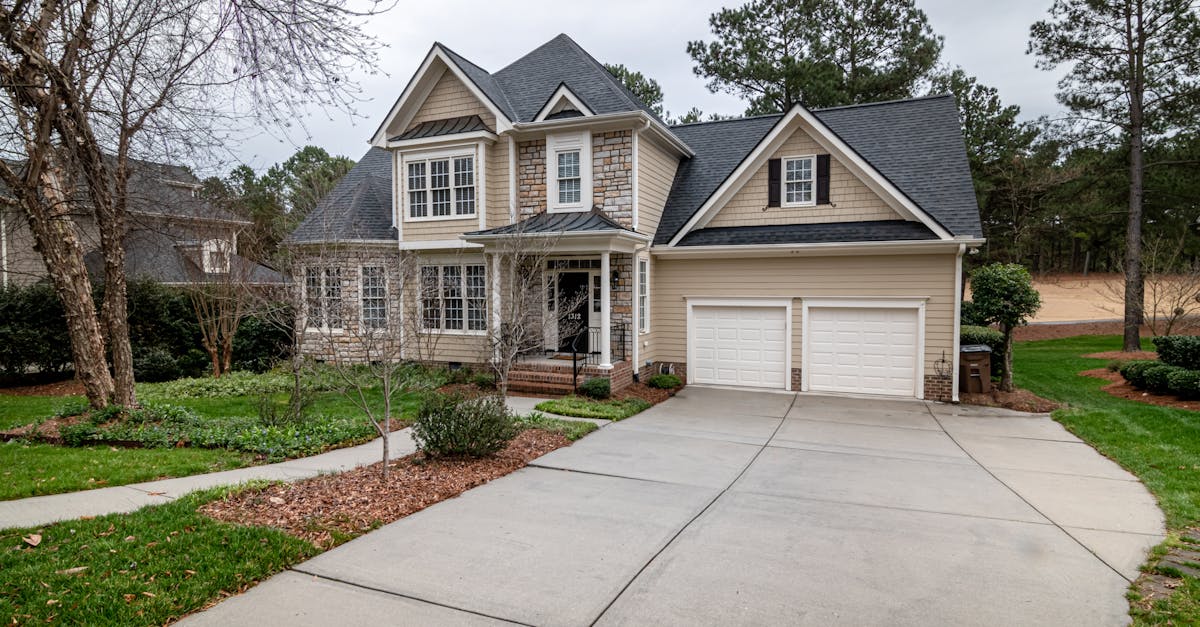Steps & Landings: Code Checklist and Design Options for Entrances
Table of Contents
A concrete driveway is more than just a place to park your vehicle—it’s a structural asset that supports daily loads, enhances curb appeal, and protects your property’s value. Over time, however, even the most well-built concrete driveways begin to show signs of wear. Cracks appear, surfaces flake, and uneven sections may develop. At that point, homeowners across Canada face a critical question: when should you resurface a concrete driveway, and when is full replacement the smarter investment?
This decision is not just about appearance. Choosing the wrong solution can lead to repeated repairs, wasted money, and long-term structural problems—especially in Canada’s harsh freeze-thaw climate. Drawing on real-world concrete manufacturing and field experience, this guide will help you accurately assess your driveway’s condition and understand the practical difference between resurfacing and replacement.
As a professional precast concrete manufacturer serving clients across Canada, Omega2000 works daily with concrete structures designed for strength, durability, and longevity. The insights below reflect industry best practices, engineering principles, and decades of applied expertise.

Understanding the Condition of Your Concrete Driveway
Before deciding whether to resurface or replace, it’s essential to understand why concrete driveways deteriorate and how to recognize different types of damage. Not all cracks or surface flaws mean failure—some are cosmetic, while others signal deeper structural issues.
Why Driveway Damage Happens Over Time
Concrete is extremely strong in compression, but it is not immune to environmental and mechanical stress. In Canada, several factors accelerate driveway deterioration:
- Freeze-thaw cycles: Water penetrates small cracks, freezes, expands, and forces the concrete apart.
- Heavy vehicle loads: SUVs, trucks, and commercial vehicles increase stress on slabs.
- Poor drainage: Standing water weakens the sub-base and promotes cracking.
- Concrete age: Most residential driveways last 25–30 years under normal conditions.
- Original construction quality: Improper mix design or insufficient reinforcement leads to early failure.
According to the American Concrete Institute (ACI), environmental exposure and sub-base conditions are the two most common contributors to premature concrete distress—both of which are highly relevant in northern climates.
Common Types of Concrete Driveway Damage
Identifying the type of damage is more important than the amount. Common issues include:
- Hairline cracks: Thin surface cracks that do not widen over time
- Surface scaling: Flaking or peeling of the top layer
- Spalling: Chipping caused by freeze-thaw cycles or de-icing salts
- Deep structural cracks: Wide, uneven cracks that penetrate the slab
- Settlement or heaving: Sections that sink or rise due to sub-base failure

What Does Concrete Driveway Resurfacing Mean?
Concrete driveway resurfacing is often misunderstood. It is not a structural repair, but rather a method of restoring the surface appearance and performance of a driveway that is still fundamentally sound.
Definition and Process of Concrete Resurfacing
Resurfacing involves applying a thin concrete overlay or polymer-modified coating over the existing driveway. The process typically includes:
- Thorough cleaning and pressure washing
- Repairing minor cracks and surface defects
- Applying a bonding agent
- Installing a new overlay layer
- Optional sealing or decorative finishing
When done professionally, resurfacing can dramatically improve the driveway’s appearance while extending its usable life.
Types of Damage Suitable for Resurfacing
Resurfacing is most effective when the driveway’s structural base remains intact. It is appropriate for:
- Minor surface cracks that are not widening
- Discoloration or staining
- Light spalling or surface wear
- Cosmetic imperfections from aging
As concrete expert and author Peter Smith notes, “If the slab is stable and level, resurfacing can be a cost-effective way to gain another decade of service life.”
Benefits of Resurfacing a Concrete Driveway
Homeowners often choose resurfacing because it offers several advantages:
- Lower upfront cost compared to full replacement
- Faster project completion—often within 1–2 days
- Minimal disruption to daily use
- Improved curb appeal with decorative options
In many cases, resurfacing can extend the driveway’s life by 8–15 years when combined with proper maintenance.
Limitations of Driveway Resurfacing
Despite its benefits, resurfacing is not a universal solution. It cannot correct:
- Structural cracking
- Sub-base failure
- Severe settlement or heaving
- Advanced concrete deterioration
If these issues are present, resurfacing may fail prematurely, leading to peeling overlays or recurring cracks.

What Does Concrete Driveway Replacement Involve?
Concrete driveway replacement is a comprehensive solution that addresses both surface damage and underlying structural problems. While it requires a higher upfront investment, replacement delivers the longest lifespan and the highest level of performance—especially important for Canadian properties exposed to extreme seasonal changes.
Definition and Full Replacement Process
Replacing a concrete driveway means completely removing the existing slab and constructing a new one from the ground up. A professional replacement typically includes:
- Breaking and removing the old concrete
- Inspecting and correcting sub-base conditions
- Installing proper drainage and compaction
- Adding reinforcement such as rebar or wire mesh
- Pouring or installing high-quality concrete or precast elements
- Controlled curing and finishing
According to the Canadian Concrete Masonry Producers Association, proper sub-base preparation alone can increase concrete lifespan by more than 30%.
Signs Your Driveway Needs Full Replacement
Some damage simply cannot be repaired at the surface level. Replacement is usually the best option if you notice:
- Wide cracks that grow or shift over time
- Multiple intersecting cracks forming broken sections
- Heaving caused by frost or poor drainage
- Sunken areas from sub-base erosion
- Extensive spalling exposing aggregate
In these situations, resurfacing would only mask the problem temporarily.
Benefits of Replacing a Concrete Driveway
Although more intensive, driveway replacement offers clear long-term advantages:
- Maximum durability: 30–40 years of service life when properly built
- Improved safety: Eliminates trip hazards and uneven sections
- Better load performance: Designed for modern vehicle weights
- Increased property value: A new driveway enhances resale appeal
For homeowners planning to stay long-term, replacement often proves more cost-effective over the life of the property.
Resurface vs Replace: Side-by-Side Comparison
Cost Comparison (Canada-Focused)
| Factor | Resurfacing | Replacement |
|---|---|---|
| Average Cost | Lower upfront | Higher initial investment |
| Project Duration | 1–2 days | Several days to a week |
| Lifespan | 8–15 years | 30–40 years |
| Structural Improvement | No | Yes |
Longevity and Performance
Resurfacing improves appearance and short-term usability, but replacement restores full structural integrity. In climates with severe winters, replacement often outperforms resurfacing over the long term.
Time, Disruption, and Maintenance
Resurfacing minimizes disruption and requires light maintenance, while replacement involves more construction activity but reduces long-term maintenance needs.
How Climate in Canada Affects Your Decision
Freeze-Thaw Cycles and Structural Damage
Canada’s freeze-thaw cycles are one of the most aggressive stressors on concrete. Water expansion within cracks can exert pressures exceeding 25,000 psi, according to engineering studies—enough to break down weak concrete over time.
Why Professional Concrete Quality Matters
Professionally manufactured concrete—especially precast solutions—offers controlled curing, consistent strength, and improved durability. These factors are critical for resisting weather-related damage.
When Professional Concrete Expertise Is Essential
Risks of DIY Repairs
DIY resurfacing kits often fail due to inadequate surface preparation and improper material selection. These failures can lead to peeling overlays and trapped moisture.
Benefits of Working With Professional Concrete Manufacturers
- Quality-controlled materials
- Engineered mix designs
- Compliance with Canadian standards
- Long-term performance assurance
How Omega2000 Supports Durable Concrete Solutions
Our Precast Concrete Manufacturing Capabilities
Omega2000 specializes in precast concrete manufacturing using modern equipment and proven quality-control processes. Our products are engineered for strength, consistency, and long-term durability across Canada’s diverse climate zones.
Serving Residential and Commercial Clients Across Canada
With a professional team and nationwide reach, Omega2000 delivers reliable concrete solutions for homeowners, contractors, and commercial projects—on time and to specification.
Final Decision Checklist – Resurface or Replace?
Choose Resurfacing If:
- The driveway is structurally sound
- Damage is cosmetic or superficial
- You want a cost-effective short- to mid-term solution
Choose Replacement If:
- Cracks are deep or expanding
- The driveway is uneven or sinking
- You want a long-term investment
Frequently Asked Questions
How long does concrete resurfacing last?
Typically 8–15 years, depending on climate and maintenance.
Can a severely cracked driveway be resurfaced?
No. Structural cracks usually require full replacement.
Is replacement always more expensive?
Initially yes, but it often costs less over the driveway’s full lifespan.
Does resurfacing increase home value?
Yes, but replacement provides greater long-term value.
When should I consult a concrete professional?
If cracks widen, slabs move, or drainage issues appear, professional assessment is essential.
Conclusion: Making the Right Investment for Your Driveway
Choosing between resurfacing and replacement depends on structural condition, climate exposure, and long-term goals. While resurfacing can restore appearance and function, replacement delivers unmatched durability and peace of mind.
If you’re unsure which solution is right for your property, consulting experienced concrete professionals can prevent costly mistakes.
Call to Action
For expert guidance, high-quality precast concrete solutions, and professional support anywhere in Canada, contact Omega2000 today. Our team is ready to help you build concrete solutions designed to last.
